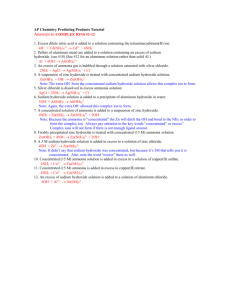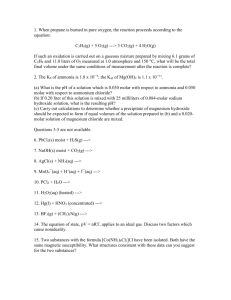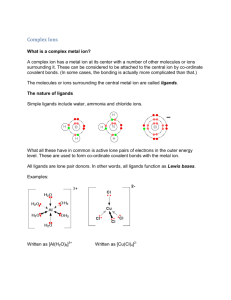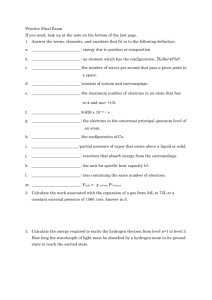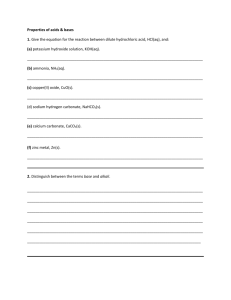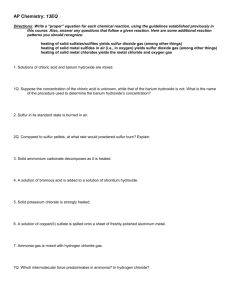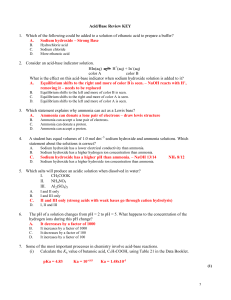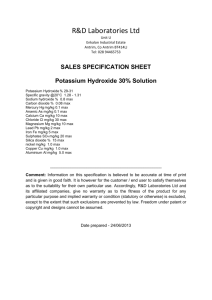Answers to COMPLEX IONS #13-24
advertisement
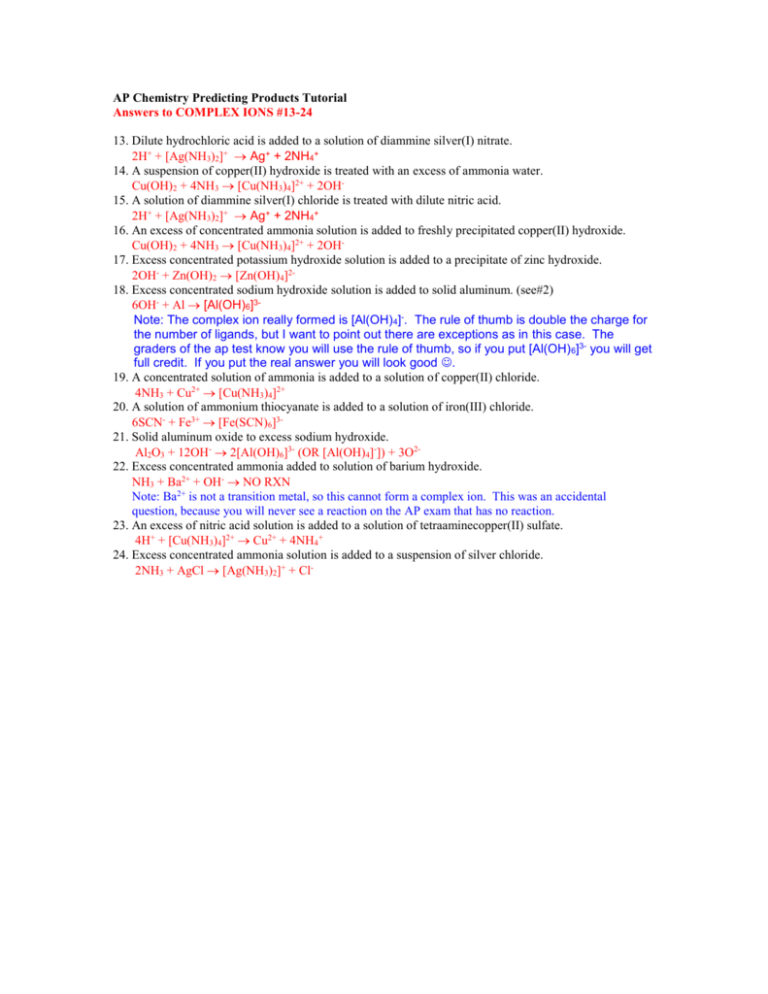
AP Chemistry Predicting Products Tutorial Answers to COMPLEX IONS #13-24 13. Dilute hydrochloric acid is added to a solution of diammine silver(I) nitrate. 2H+ + [Ag(NH3)2]+ Ag+ + 2NH4+ 14. A suspension of copper(II) hydroxide is treated with an excess of ammonia water. Cu(OH)2 + 4NH3 [Cu(NH3)4]2+ + 2OH15. A solution of diammine silver(I) chloride is treated with dilute nitric acid. 2H+ + [Ag(NH3)2]+ Ag+ + 2NH4+ 16. An excess of concentrated ammonia solution is added to freshly precipitated copper(II) hydroxide. Cu(OH)2 + 4NH3 [Cu(NH3)4]2+ + 2OH17. Excess concentrated potassium hydroxide solution is added to a precipitate of zinc hydroxide. 2OH- + Zn(OH)2 [Zn(OH)4]218. Excess concentrated sodium hydroxide solution is added to solid aluminum. (see#2) 6OH- + Al [Al(OH)6]3Note: The complex ion really formed is [Al(OH)4]-. The rule of thumb is double the charge for the number of ligands, but I want to point out there are exceptions as in this case. The graders of the ap test know you will use the rule of thumb, so if you put [Al(OH) 6]3- you will get full credit. If you put the real answer you will look good . 19. A concentrated solution of ammonia is added to a solution of copper(II) chloride. 4NH3 + Cu2+ [Cu(NH3)4]2+ 20. A solution of ammonium thiocyanate is added to a solution of iron(III) chloride. 6SCN- + Fe3+ [Fe(SCN)6]321. Solid aluminum oxide to excess sodium hydroxide. Al2O3 + 12OH- 2[Al(OH)6]3- (OR [Al(OH)4]-]) + 3O222. Excess concentrated ammonia added to solution of barium hydroxide. NH3 + Ba2+ + OH- NO RXN Note: Ba2+ is not a transition metal, so this cannot form a complex ion. This was an accidental question, because you will never see a reaction on the AP exam that has no reaction. 23. An excess of nitric acid solution is added to a solution of tetraaminecopper(II) sulfate. 4H+ + [Cu(NH3)4]2+ Cu2+ + 4NH4+ 24. Excess concentrated ammonia solution is added to a suspension of silver chloride. 2NH3 + AgCl [Ag(NH3)2]+ + Cl-
